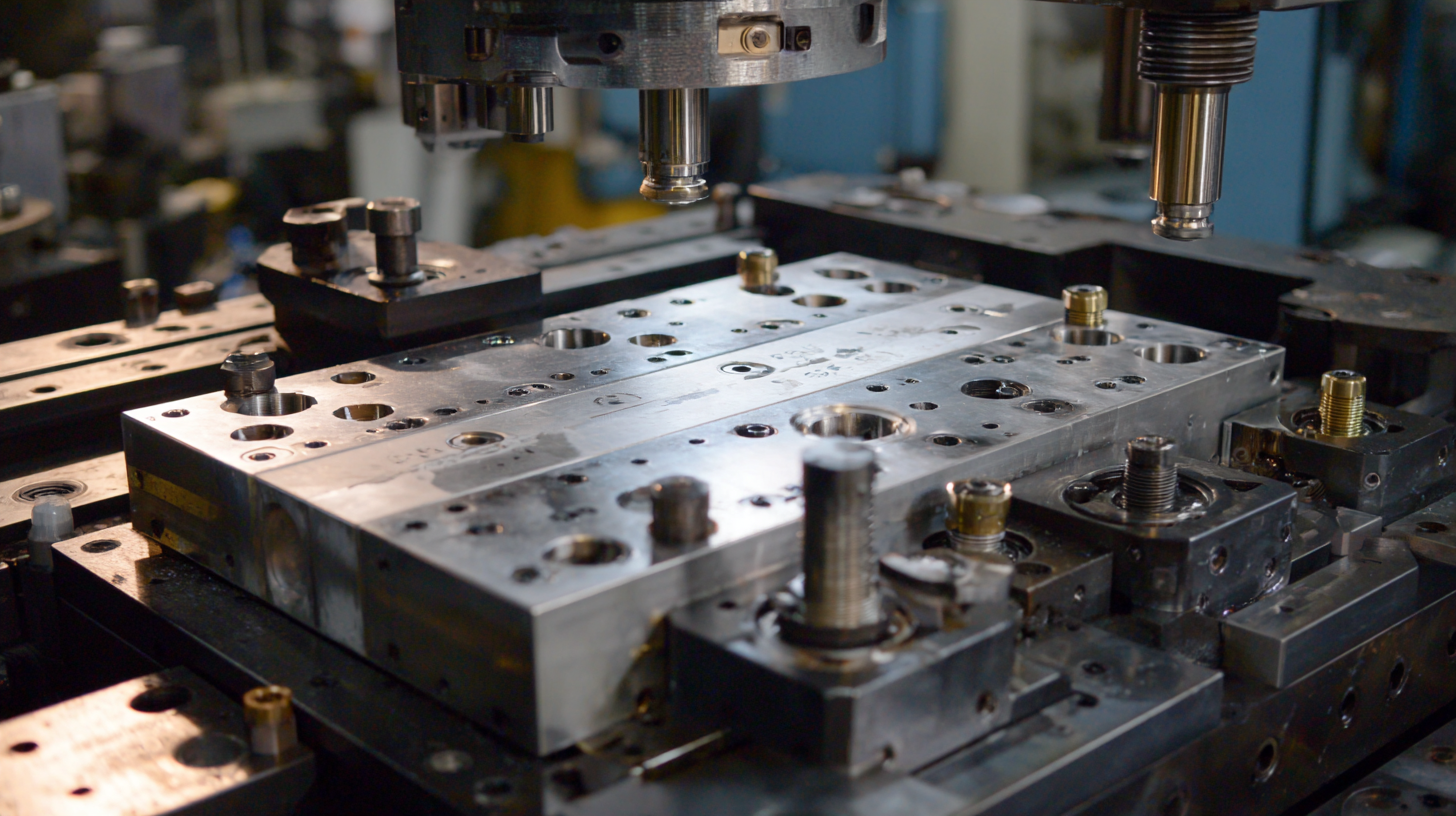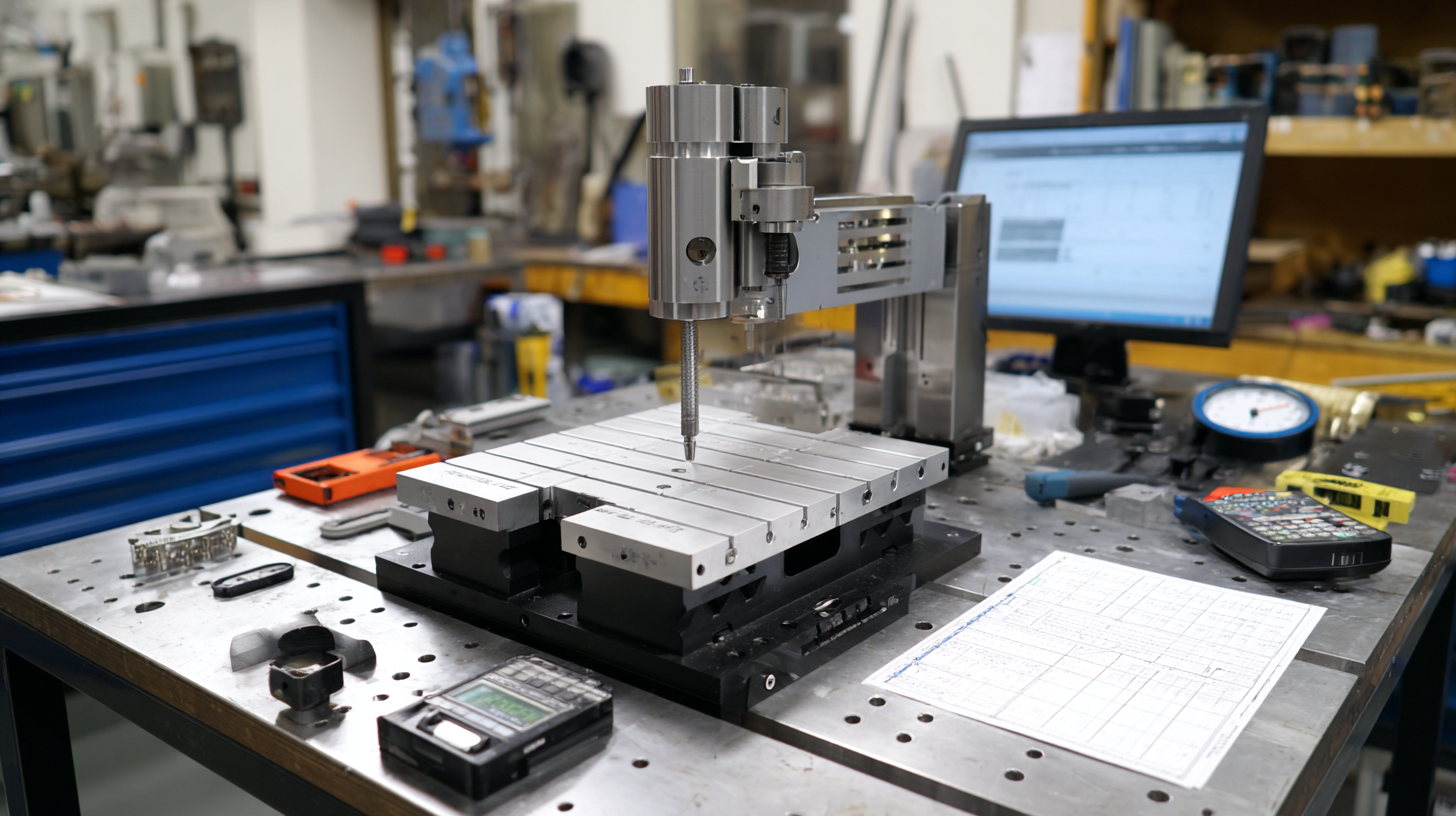

In today's highly competitive manufacturing landscape, sourcing the right equipment is crucial for ensuring product quality and operational efficiency. Comprehensive Checking Fixtures (CCFs) play a pivotal role in the production process by facilitating the precision measurement and validation of components.
According to a study by the National Institute of Standards and Technology (NIST), manufacturers that implement high-quality checking fixtures can reduce production errors by up to 30%, significantly lowering costs associated with rework and scrap. As companies strive to enhance productivity and maintain superior quality standards, understanding the various alternatives available for CCFs becomes essential.
This blog will explore top strategies for sourcing the most effective Comprehensive Checking Fixtures tailored to your specific production requirements, ensuring both reliability and adherence to industry standards.

As we look ahead to 2025, the landscape of comprehensive checking fixtures is set to be transformed by several key technological trends. One of the most critical advancements is the integration of artificial intelligence (AI) and machine learning into checking fixture design and operation. According to a report by MarketsandMarkets, the AI in manufacturing market is expected to grow from $1.4 billion in 2021 to $16.7 billion by 2026, at a CAGR of 40.7%. This growth will enable manufacturers to develop smarter fixtures that can adapt to various production scenarios, minimizing errors and reducing setup time.
Additionally, the adoption of advanced automation tools is another trend that will shape comprehensive checking fixtures. The International Federation of Robotics forecasts that global sales of industrial robots will grow by approximately 14% each year, reflecting an increasing reliance on automation in production lines. This movement towards automation will allow checking fixtures to become more efficient and precise, ensuring higher quality standards and faster turnaround times. With the convergence of these technologies, manufacturers can expect a future where checking fixtures are not only more effective but also seamlessly integrated into smart production environments, propelling operational excellence.

Automated fixtures have become indispensable in modern production lines, offering a significant boost in efficiency and precision. These advanced tools are designed to streamline processes by reducing manual intervention, which can lead to errors and inconsistencies. By integrating automated checking fixtures into production workflows, manufacturers can ensure that every component meets strict quality standards, thereby minimizing rework and scrap rates. This automation allows for faster cycle times, enabling production lines to increase output without sacrificing quality.
Furthermore, incorporating automated fixtures helps in data collection and analysis, providing valuable insights into production performance. Real-time feedback from automated systems allows operators to make swift adjustments, optimizing operations and reducing downtime. This intelligent use of technology not only enhances the reliability of the production process but also equips teams with the information needed to make informed decisions quickly. As industries continue to embrace automation, the role of automated fixtures in enhancing production efficiency will only grow more critical, paving the way for smarter, more productive manufacturing environments.
| Fixture Type | Description | Efficiency Benefits | Automation Level | Cost Estimate ($) |
|---|---|---|---|---|
| Manual Checking Fixture | Used for visual inspections and measurements. | Low initial cost, flexibility in use. | 0% | 500 - 1,000 |
| Semi-Automated Fixture | Assists operators with alignment and measurement. | Reduced inspection time and operator fatigue. | 50% | 1,000 - 5,000 |
| Fully Automated Fixture | Uses robotics for complete inspection with minimal human intervention. | Maximized throughput and consistency. | 100% | 10,000 - 50,000 |
| Custom Engineered Fixture | Specially designed to meet specific production requirements. | Tailored to enhance precision and reduce waste. | Varies | 5,000 - 20,000 |
| Portable Inspection Fixture | Easily transportable for off-site inspections. | Flexibility and accessibility. | 0% | 300 - 800 |
Understanding the return on investment (ROI) of advanced checking fixtures is crucial for manufacturers aiming to enhance efficiency and reduce production costs. These fixtures, designed to provide precise measurements and quality checks, minimize human error and decrease the likelihood of defects. By integrating precision checking fixtures into the production process, companies can significantly lower costs associated with rework, scrap, and delays caused by faulty components.
Moreover, the initial investment in advanced checking fixtures is often recouped over time through improved operational productivity. As these fixtures streamline the quality assurance process, they allow for faster production rates without sacrificing quality. Manufacturers can thus deliver products more quickly to market, which not only boosts their competitive edge but also enhances customer satisfaction.
Ultimately, understanding the cost savings associated with precision checking fixtures equips businesses with the knowledge to make informed decisions about their sourcing strategies. By focusing on high-quality, advanced solutions, manufacturers can create a more efficient production environment that drives long-term financial success.

The integration of IoT solutions into production environments is increasingly vital for real-time monitoring and quality control. As industries evolve towards smart factories, the market for IoT-driven systems is experiencing remarkable growth. By 2025, the global EMI measurement equipment market is estimated to reach $174.6 million, with predictions soaring to $278.78 million by 2033, representing a CAGR of 5.9%. This shift is reflective of a broader trend, where IoT technologies enhance supply chain operations by improving visibility, control, and overall productivity.
Moreover, the engineering, procurement, and construction management (EPCM) market is expected to expand significantly, projected to rise from $499 billion in 2024 to nearly $953.2 billion by 2032, showcasing an 8.42% growth rate. The proliferation of IoT applications across various sectors, including automotive, aerospace, and energy management, underscores the technology's pivotal role in driving efficiency and innovation. As businesses adopt IoT for data ingestion and visualization, they unlock immense potential for optimizing processes and ensuring higher customer satisfaction, thereby reshaping traditional manufacturing paradigms.
In today’s fast-paced manufacturing environment, the ability to adapt quickly to changing production demands is crucial. The customization of checking fixtures plays a significant role in enhancing production flexibility. By tailoring fixtures to specific project requirements, manufacturers can streamline workflows, reduce setup times, and increase overall efficiency. Custom checking fixtures allow for precise measurements and quality checks, ultimately leading to a more agile production process.
Tip: Consider conducting a thorough needs assessment before developing custom checking fixtures. Engaging with stakeholders from various departments will ensure you gather diverse input, helping you design fixtures that truly meet production needs.
Moreover, customizing checking fixtures can reduce the risk of errors and rework. When fixtures are designed with specific components in mind, they facilitate better alignment and integration within the assembly line. This not only improves the accuracy of quality checks but also enhances the safety and reliability of the production process.
Tip: Invest in advanced design software and tools to create prototypes of your custom fixtures. This allows for testing and adjustments before full-scale production, ensuring that the final product aligns perfectly with your operational goals.
